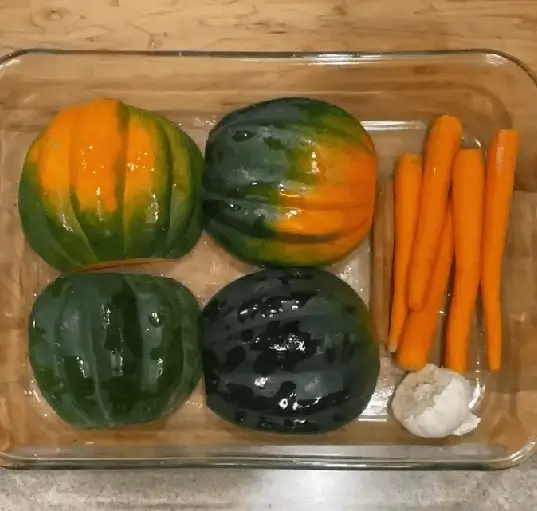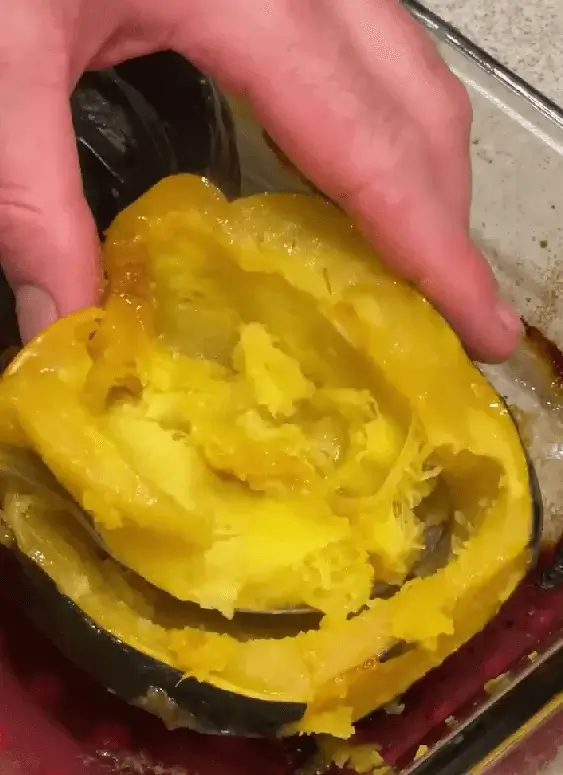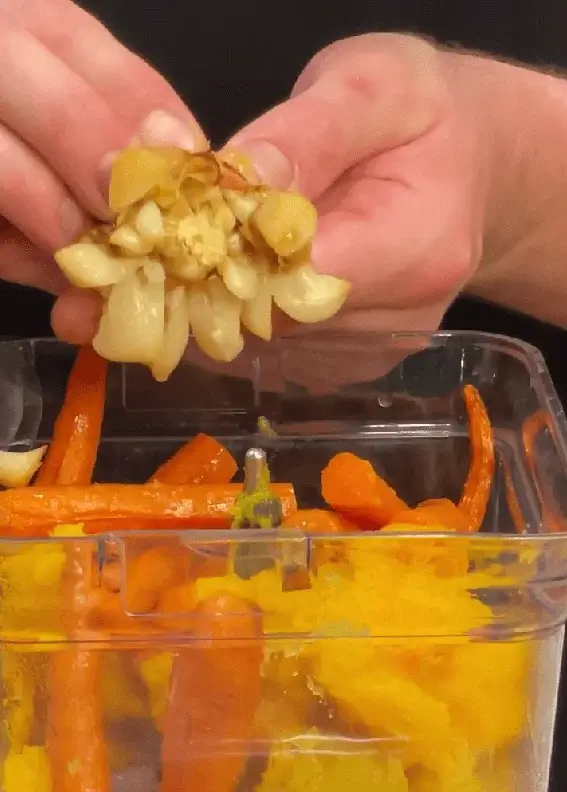Roasted Acorn Butternut Squash Soup
We may earn a commission from recommended products, at no extra cost to you. See Disclosure.
INGREDIENTS
- 1 butternut squash, halved and seeds removed
- 2 acorns
- 2 cinnamon sticks
- 5 medium carrots, peeled
- 4 shallots, peeled and halved
- 3 bay leaves
- 13 sage leaves
- 1 garlic head, halved
- 1 cup white wine
- 1 cup chicken stock or vegetable stock
- Salt
- Black pepper
- ½ teaspoon nutmeg
Garnish:
- Toasted pumpkin seeds
- Sour cream
INSTRUCTIONS
- Divide out the sage leaves, bay leaves and shallot pieces in the openings of the squash, season with salt and pepper and flip over flesh side down. Place the carrots, cinnamon sticks, and head of garlic alongside the squash and pour the wine into the pan. You may need to split into 2 separate roasting pans, but they should take about the same amount of time in the oven, just divide the wine out accordingly.
- Roast at 400°F (205°C), uncovered, for 60-75 minutes, or until tender. Remove and set aside to cool slightly for easier handling.
- Scoop out the flesh and place in a blender along with the carrots, shallots, and sage leaves. Squeeze the garlic out of the skin into the blender. Discard the bay leaves and cinnamon sticks.
- Blend until smooth and transfer to a large saucepan. Optional: pass through a fine strainer to achieve a silky-smooth consistency. Add the stock ¼ cup at a time until you reach your desired thickness. Add the nutmeg and adjust the seasoning as needed.
- Garnish with toasted pumpkin seeds and a drizzle of sour cream and serve.

FAQ
Can I substitute the wine in this acorn butternut squash soup?
Yes, you can substitute the wine with a variety of liquids depending on your preferences and dietary restrictions. Vegetable broth, apple cider, or even water with a splash of vinegar are all viable options. Each will impart a slightly different flavor profile to the dish, so consider the overall taste you’re aiming for when selecting a substitute. Additionally, keep in mind that the acidity level of the substitute liquid may affect the final taste, so adjust seasoning accordingly.


What can I use if I don’t have a blender?
If a blender isn’t available for you to prepare roasted acorn butternut squash soup, there are alternative methods to achieve a similar result. One option is to use a food processor, if available, which can also effectively puree the ingredients. Alternatively, you could use a potato masher or a fork to manually mash the cooked ingredients until smooth, though this may result in a slightly chunkier texture. Another option is to finely chop the ingredients before cooking to help break them down during the cooking process, creating a smoother consistency.


What can I use as a substitute for sour cream?
A common substitute for sour cream is Greek yogurt, which offers a similar tangy flavor and creamy texture. Alternatively, you can use buttermilk, which provides a tangy flavor and a thinner consistency, or crème fraîche for a richer taste. Dairy-free options include coconut or almond-based yogurt for a creamy texture with a slightly different flavor profile. Another option is to blend silken tofu with lemon juice or vinegar to achieve a similar tanginess. Each substitute may slightly alter the taste and texture of the dish.

How thick should the acorn butternut squash soup be before serving?
The thickness of the soup can be adjusted to personal preference. Generally, it should have a smooth and velvety consistency, neither too thin nor too thick. Aim for a texture that coats the back of a spoon but is still pourable. If the soup is too thick, you can thin it out by adding more stock or water a little at a time until desired consistency is reached. Conversely, if it’s too thin, you can simmer it longer to reduce and thicken, or add a thickening agent like cornstarch or flour.

